Image original by Gran Fury & remixed by Visual AIDS.
Download the Spectacle of Stigma Booklet!
“Even I am surprised by the verdict.”
Andre Rajna, Crown Prosecutor, December 19, 2012
I recently attended the criminal HIV exposure trial of two young men in Kitchener, Ontario. Each was found guilty of two counts of Aggravated Sexual Assault for exposing (but not infecting) two other men to HIV. They are now liable for a Life Sentence.
Prior to the trial, I had been following HIV exposure trials in Canada and reading the courts’ decisions. To me, many of the guilty verdicts just did not seem to fit the evidence presented in the trial or in some cases did not even seem to follow the law.[i] How does non-violent, consensual sex between adults become a crime? I had been wondering if I was missing something; I wondered what it was that I was blind to. Was I being unreasonable? Did I not properly understand the law or the legal procedures? Was I blind to my own ignorance or bias? When I found out that another HIV exposure trial was scheduled right in my own neighbourhood, I knew that I had to go. I had to see what was happening for myself.
The Trial
The trial lasted 12 ½ days, including two full days of jury selection and 11 hours of jury deliberations. The Judge began the trial by giving the Jury some general preliminary instructions.
The Crown Prosecutor then made an opening statement; Defense Counsel did not. The Crown, then presented its evidence, calling 5 witnesses: the two investigating police detectives; the two Complainants and a public health expert on HIV transmission and epidemiology. The Crown also presented multiple exhibits including transcripts of text messages among the Complainants and Defendants, the medical records of the Defendants and one of the Complainants, the expert’s report for this case and a necklace one of the Defendants mistakenly left behind at one of the Complainant’s apartment. All of this evidence was rigorously cross-examined by the Defense Counsellors.
The Jury asked multiple questions of the Judge during Crown’s presentations and the Defense’s cross-examination. Their first question, on the morning of second day of evidence, requested the definition of Aggravated Sexual Assault. The Judge postponed the answer until his final instructions to the Jury.
The Judge expressed “grave doubts” about the Complainants’ credibility and said they were “alive to the risks.” Justice Donald Gordon, Pre-charge Conference, December 13, 2012
Defense Counsel aggressively targeted the credibility of the Complainants. Both Complainants were asked to explain the multiple discrepancies between their police statements, their testimony at pre-trial hearings and their testimony at the trial itself. They gave distinctly different versions of the sex acts that were the subject of the charges. The first Complainant recounted three different accounts about which one of the Defendants he had had intercourse with, over the course of his statements to the police and his testimony at the preliminary hearing and this trial. He testified that he tested regularly for sexually transmitted infections (STI’s), always used a condom for intercourse and always enquired about his partners’ HIV status, except, of course, in this case and the 5 other sexual partners he referred to in his text messages including the other Complainant whom he knew to have an active syphilis infection. After this contradiction was exposed he stated that he relied on the other Complainant to arrange and screen the participants for all of their group sex encounters. “If they were all right with him, it was OK with me.”
The second Complainant testified that he had not always used condoms or enquired about his partners’ HIV status because he looked over his potential sexual partners and if “they looked upstanding and had their own car, they were good to go.” He said this was the first time he arranged a group sexual encounter, usually it was done by the other Complainant. He perjured himself at the preliminary hearing by stating that he did not have a criminal record for drugs and weapons related charges. He was also exposed by several contradictions and evasions designed to cover up his illicit drug activities on the day of the alleged assaults. He deleted all the text messages stored on his cell phone for the same purpose before he made his complaint to the police. He also lied on the stand about knowing he had an active syphilis infection at the time of the alleged assaults even though his medical records, which were one of the exhibits, indicated otherwise. Both Complainants were caught colluding about their testimony at the trial, both prior to the trial and, on the evening between their appearances on the witness stand.
The Defense did not call any witnesses but presented one exhibit, several letters from one of the Defendant’s doctor to corroborate some of the testimony of the Complainants.
It became clear during the course of these proceedings that the Defense had previously won a motion at a pre-trial hearing to admit into evidence a limited amount of the Complainants’ sexual history that related directly to the charges. Usually the sexual history of the complainant is not admissible to prevent its use to discredit the complainant, however in this case an application under Section 236(2) of the Criminal Code of Canada was granted as this evidence had a direct bearing on the decisions to be made by the Jurors.
Following the presentation of evidence, the Defense Counsellors made their Summations and then the Crown Prosecutor made his Summation.
The Judge then gave a summation of the evidence and his instructions to the Jury, explaining principles of law, including the innocence of the Defendants until proven guilty, that the Jury may not infer guilt if the Defendants chose not to testify, that the Crown must prove its case beyond a reasonable doubt and he explained the legal elements of the Aggravated Sexual Assault law. The Jury was then sequestered to make their deliberations.
How the Jury got it Wrong
After explaining the Aggravated Sexual Assault law and pointing out that intentionally withholding one’s HIV+ status invalidates the sexual partner’s consent, the Judge put the three crucial questions in this case to the Jury. One, did the Crown prove beyond a reasonable doubt that the sex acts took place? Two, did the Crown prove beyond a reasonable doubt that the Defendants did not disclose their HIV+ status to the Complainants? And three, did the Crown prove beyond a reasonable doubt that the Complainants would not have consented to the sex acts had they known of the Defendants’ HIV+ status? The third question contains two elements: the first element is determined by the Complainants’ state of mind at the time of the sex acts, and the second, the Complainants’ evidence of non-consent.[ii] The Judge also instructed the Jury to limit their use of the Complainants’ sexual history to the third question.
“I’m a little shocked…I think the jury got it wrong.” Cynthia Fromstein, Defense Counsel
Of course, it is the prerogative of the Jury as the triers of fact to decide which evidence to accept whether in whole, or in part or not at all. As a first hand witness to the entire trial, I was dismayed by how much evidence was set aside and that the Jury possibly set aside key principles of law (proof beyond a reasonable doubt, testimonial credibility, innocent until proven guilty or the distinction between evidence and argument) in order to accommodate the verdicts.
Let us examine each of the three crucial questions in turn. The first question, did the Crown prove beyond a reasonable doubt that the sex acts took place? The first Complainant indicated in his police statement that he had oral sex with the second Defendant and anal intercourse with the other. At the preliminary hearing he stated that he had anal intercourse with the first Defendant. At the trial he only mentioned having anal intercourse with the other Complainant until his testimony was challenged on cross-examination. Three varying accounts of the same events raised a reasonable doubt to me about the sex acts, at least concerning the first Defendant. As the Crown was not pursuing a conviction based on the alleged act of oral sex, the Judge entered a verdict of Not Guilty concerning one of the charges of assisting an Aggravated Sexual Assault against the second Defendant, as a matter of law, due to the lack of evidence. The other sex acts forming the basis of three of the remaining four Aggravated Sexual Assault charges were not challenged.
The second question, did the Crown prove beyond a reasonable doubt that the Defendants did not disclose their HIV+ status to the Complainants? A transcript of one text conversation between the Defendants stated, “I told him on Facebook, I think he forgot.” The Complainant could not recall. Yet, both Complainants related accounts of an in person conversation with the Defendants about why the first Defendant was on leave from work due to illness. Neither Complainant could recall precise details of the conversation nor if the Defendant discussed the collapse of his immune system or his CD4 count (a laboratory marker of immune function) as they indicated in previous statements. One Complainant said he was only interested in finding a way to receive paid leave himself and only wanted to know what the doctor told the employer. He said the Defendant was evasive. The Complainant evaded answering questions about the Defendant telling him about his HIV status at work when he discovered he was HIV+. The other Complainant could only recall making a joke about cancer during the conversation. The second Defendant did not challenge the claim that he failed to disclose his HIV+ status.
And the third question, did the Crown prove beyond a reasonable doubt that the Complainants would not have consented to the sex acts had they known of the defendants’ HIV+ status? Both Complainants repeatedly and emphatically stated that they would not knowingly engage in sex with an HIV+ person. They attempted to corroborate this statement with examples of what they would do if they found out an acquaintance was HIV+. “I wouldn’t let them in the door.” “I would have deleted his contact info from my phone.” “I would remove them as friends on Facebook.” “I wouldn’t have touched him.” “There’s no way I’d even go near someone who’s poz.”
Directly contradicting these statements was the limited evidence of the Complainants’ sexual history permitted by the Section 236(2) application brought by the Defense. This evidence was limited to the transcripts of text messages of the Complainants and their testimony about those texts, on the day of the alleged assaults, on the days they had other meetings with the Defendants and text conversations that directly referred to the alleged assaults. This evidence referred to 5 other sexual partners of the first Complainant and 4 sexual partners of the other, including each other. On cross-examination, it was revealed that all of these sexual relationships contained only occasional condom use and no enquiries about the participants’ HIV status. One of the participants was infected with syphilis as a result of the second Complainant’s actions. It was apparent that both Complainants routinely engaged in high risk group sexual encounters with virtual strangers without the use of condoms and with unknown or unstated HIV status. They both conceded their sexual partners could have been HIV+ without knowing or stating it. This evidence raised serious doubts about both Complainants’ protests that they would not have had sex knowing someone to be HIV+. Obviously, this is exactly what they practiced on a regular basis while simultaneously denying it.
So, how does a guilty verdict follow when the crucial questions are littered with doubts? There is a reasonable doubt about the credibility of the first Complainant concerning the occurrence of the sex acts with the first Defendant. There is a reasonable doubt that the same Defendant failed to disclose his HIV+ status through a Facebook communication and in person on possibly two occasions. There is significant reasonable doubt that both Complainants would not have consented to sex knowing the Defendants to be HIV+. By any measure, the Crown had certainly not proved all three crucial legal elements beyond a reasonable doubt.
Deliberation or Discrimination?
Of course, no one other than the jurors will know the content or the process over the course of their decision. However, because the verdicts do not fit the evidence and the law, I was left to infer in hindsight their possible deliberations. Were they persuaded by the Crown Prosecutor’s theory of the evidence or his rhetoric? Was the Defense too aggressive with the Complainants eliciting the Jury’s sympathy? Was the Jury influenced by the sensational nature of some of the testimony and/or other evidence? Were they swayed by familiar narratives in legal, public health or HIV culture? Did the Jury infer the Defendants were guilty because they did not testify on their own behalf? Were the Defendants guilty simply because they were known to be HIV+?
One of the arguments the Crown Prosecutor presented in his Summation was a parable about risk. A driver is speeding along Highway 401 and another driver flashes his headlights to warn the first driver that a police cruiser is conducting speed checks ahead. Of course, the first driver slows down. The Crown argued that knowledge changes behaviour but all of us know that a police cruiser may be beyond the next overpass or around the next corner and we just adhere to the speed limit. Few of us would blame another driver if we got a speeding ticket or blame another driver for not telling us something we already knew. Regret in hindsight and informed consent beforehand are not necessarily mutually exclusive.
Some of the evidence in this case was sensational and graphic, especially some of the transcripts of text conversations. The Crown argued that people don’t make statements against their own interest unless they are true. However, we all make statements against interest on a regular basis: bragging, statements of bravado, jokes, and disclosures designed to elicit trust or sympathy whether true or not, are common examples.
Were the Jurors sympathetic to the Complainants? Was the cross-examination too aggressive? Did the inclusion of Section 236(2) evidence about the Complainants’ sexual history invoke the familiar narrative of the assault victim re-victimized while on the witness stand? Were other familiar narratives in play: too often the guilty are acquitted on a technicality; the needs of the general public outweigh the rights of the individual; the embittered, disenfranchised AIDS victim bent on their own gratification without regard for others; the end justifies the means, and/or erotic myths about the transmission of HIV?
Viral bias?
Stark contrasts recurred throughout the trial, however; none was more poignant for me than the double standard between HIV and syphilis. Although not the subject of this proceeding, the Jury heard and saw evidence about the active syphilis infection of one of the Complainants. He acknowledged that he did not advise the Defendants or use condoms during intercourse with them. He also testified that he had actually infected one of his other sexual partners referred to in his text messages.
The public health expert testified that left untreated or treated too late, syphilis will result in multiple organ failure, insanity and death. He also testified that syphilis treatments were not always a cure.
We also heard that HIV exposure constituted a “significant risk of bodily harm” precisely because if left untreated HIV infection will result in death. The Judge indicated that this was a matter of law determined by a recent case at the Supreme Court of Canada.[iii] The Judge also stated in his instructions to the Jury that syphilis exposure would constitute the basis of an Aggravated Sexual Assault charge, however, the Police and the Crown failed to investigate or charge anyone in this matter. Clearly, HIV had been singled out for selective prosecution as a matter of Police and Crown policy.
Although there have been a handful of token prosecutions in Canada for exposure to other STI’s, the number of prosecutions does not approach the more than 140 cases of criminal HIV exposure.[iv]
The Miscarriage of Justice
The miscarriage of justice is not an isolated, single event or incident. It is a pervasive and systemic problem. Although most of us prefer to think that we are unprejudiced and unbiased, we must acknowledge that that is simply not possible. A recent survey of Canadians indicates that 16% of Canadians “feel afraid” of people living with HIV and 54% would be somewhat or very uncomfortable with a close friend or family member dating someone with HIV.[v]
There is an element of blindness to prejudice that appears as a surprise to us when we experience an insight about ourselves and we allow ourselves to learn from our mistakes. Injustice to others is only possible when we have conditioned ourselves to accept it, whether is about poverty, gender, race, religion, disability or HIV.
In Canada’s recent past, HIV+ persons have been convicted of Aggravated Assault for biting[vi] or spitting.[vii] HIV+ persons have been convicted of Aggravated Sexual Assault for acts of oral sex.[viii] Public health officials continue to insist that HIV+ persons use condoms for acts of oral sex.[ix] Public health messages completely disregard the effect of HIV treatment on HIV transmission for acts of vaginal or anal intercourse.[x] Some of these examples appear outrageous in light of what is known today. In this case, the Crown did not pursue a charge on the basis of an act of oral sex due to the lack of evidence that HIV can be transmitted in this manner. When are we going to get it right? How many HIV+ persons will be arrested, dragged through the courts, sometimes all the way to the Supreme Court of Canada, and even imprisoned, while the rest of us are still sorting it out?
Two patterns emerged from the other court decisions I had been reading that I mentioned at the beginning of the article. The first pattern concerns the credibility of HIV+ persons in cases where disputes over condom use or disputes over disclosure of HIV status are the issue. In the absence of corroborating physical evidence, invariably the HIV+ person is at a distinct credibility disadvantage. [xi]
The other pattern emerges surrounding the use of scientific evidence. The Supreme Court of Canada recently rejected a rigorous scientific study[xii] indicating that HIV+ persons on effective treatment were no longer infectious.[xiii] However, the Superior Court of Ontario admitted much less rigorous scientific evidence to demonstrate using phylogenetic methods that a man was the source of several HIV infections.[xiv] (Phylogenetic methods employ mathematical models to estimate the probability of genetic mutation sequences. Phylogenetic methods can say that a certain strain of HIV is more closely related to a sample strain than another. It can say that certain mutation sequences are not possible. However, it cannot definitely demonstrate one sample to be the source of another. [xv])
This case merely re-enacted the same patterns and double standards by accepting incredible testimony from the Complainants, setting aside significant evidence of consent and by the failure to counter charge one of the Complainants for syphilis exposure. Multiple standards are being utilized in Canadian courts in order to secure convictions against persons with HIV.
Even if every HIV+ person disclosed their HIV status to every sex partner every time, it would still not be sensible to have intercourse with casual partners without condoms. There is mounting evidence and consensus that HIV transmissions rates are completely explainable by the prevalence of infected but untested or untreated persons.[xvi] [xvii] [xviii] [xix] Why are we punishing the people who are known to be HIV+? What purpose does this serve? Is the desired outcome simply an HIV-free pool of casual sex partners? Do court cases like this one have any effect on the number of HIV transmissions? Perhaps the criminalization of HIV exposure in Canada is a ritual persecution we have conditioned ourselves to accept rather than a judicious prosecution with measurable outcomes. Isn’t the public interest better served by focussing on encouraging testing and ensuring access to treatment?
There’s got to be a pill for that, eh?
This case was not something that I read about in a newspaper from a big city like Toronto or a Supreme Court Case in our capital, Ottawa. It happened in the courthouse across the street from my home and was about events that occurred in my own neighbourhood. I was appalled to witness first-hand, how fundamental legal principles and safeguards were set aside to accommodate a guilty verdict that will have no effect on the outcome of an epidemic. My conclusion is, that Canadian HIV exposure trials are both a symptom and a perpetuation of the stigmatization of Canadians with HIV.
There is an effective treatment for HIV. It prevents progression to AIDS,[xx] restores life expectancy[xxi] and prevents HIV transmission.[xxii] Is anyone working on a pill for HIV-related discrimination?
[i] R v Mekonnen, 2009 ONCJ 643 and R v DC, 2012 SCC 48.
[ii] R v Pottelberg, 2010 ONSC 5756 and R v Ewanchuk, 1999 S.C.R. 330.
[iii] R v Mabior, 2012 SCC 47.
[iv] The Canadian HIV/AIDS Legal Network, HIV non-disclosure and the criminal law: An analysis of two recent decisions of the Supreme Court of Canada, 2012. p. 3.
[v] HIV and AIDS in Canada: A National Survey Summary Report, CIHR Social Research Centre in HIV Prevention
at the University of Toronto, Dalla Lana School of Public Health and the Canadian Foundation for AIDS Research (2012).
[vi] R v Thissen, unreported decision 16 May 1996, Ontario Court (Prov. Div.) Toronto and The Canadian HIV/AIDS Legal Network, HIV/AIDS Policy and Law Review, 1(1) Fall 1994.
[vii] The HIV/AIDS Legal Network, HIV/AIDS Policy and Law Review, 10(1) April 2005.
[viii] R v Mekonnen, supra.
[ix] Letter from Dr. Liana Nolan, Medical Officer of Health for the Waterloo Health Unit, Regional Municipality of Waterloo, May 11, 2010.
[x] Ibid. and Attia et al. “Sexual transmission of HIV according to viral load and antiretroviral therapy: systematic review and meta-analysis” AIDS 2009, 23:1397-1404.
[xi] R v Mekonnen, supra and R v DC, supra.
[xii] Cohen et al. “Prevention of HIV-1 Infection with Early Antiretroviral Therapy” NEJM (2011), 365:493-506.
[xiii] R v Mabior, supra.
[xiv] R v Aziga, (4 April 2009), Hamilton CR-08-1735.
[xv] Bernard EJ et al. “HIV forensics: pitfalls and acceptable standards in the use of phylogenetic analysis as evidence in criminal investigations of HIV transmission” HIV Medicine (2007), 8, 382–387.
[xvi] Ambrosioni J et al. “Impact of HAART on the molecular epidemiology of newly diagnosed HIV infections in Geneva, Switzerland” AIDS 26(16):2079-2086, October 13, 2012.
[xvii] Cowen SA et al. “Stable incidence of HIV diagnoses among Danish MSM despite increased engagement in unsafe sex” JAIDS 61(1):106-111, September 1, 2012.
[xviii] Henard S et al. “Is total community viral load a robust predictive marker of the efficacy of TasP strategy?” JAIDS 61(3):400-402, November 1, 2012.
[xix] van Sighem A et al. “Increasing sexual risk behaviour amongst Dutch MSM: mathematical model versus prospective cohort data” AIDS 26 (14):1840-1843, September 10, 2012.
[xx] Llewden et al. “HIV-infected adults with a CD4 count greater than 500 cells/mm³ on long-term combination antiretroviral therapy reach same mortality rates as the general population” JAIDS 46(1):72-77, September 1, 2007.
[xxi] May M et al. “Impact of late diagnosis and treatment on life expectancy in people with HIV-1: UK Collaborative HIV Cohort (UK CHIC) Study” BMJ 343, DOI: 10.1136/bmj.d6016.2012.










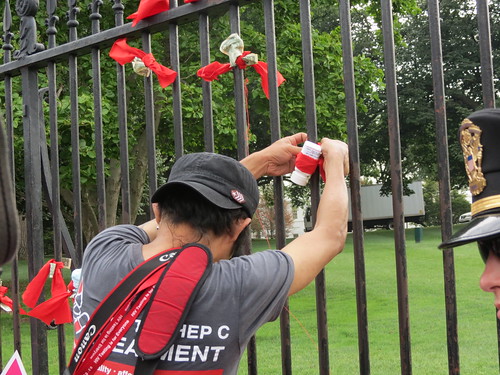



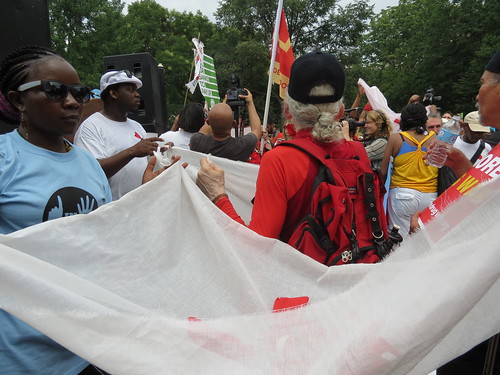



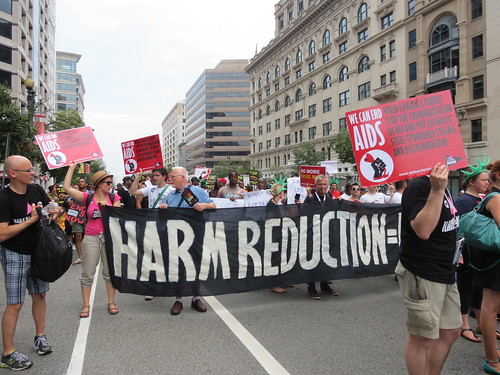


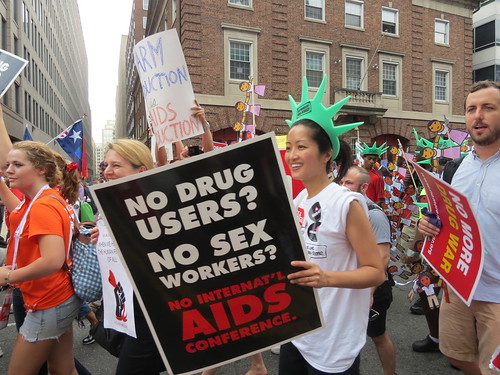
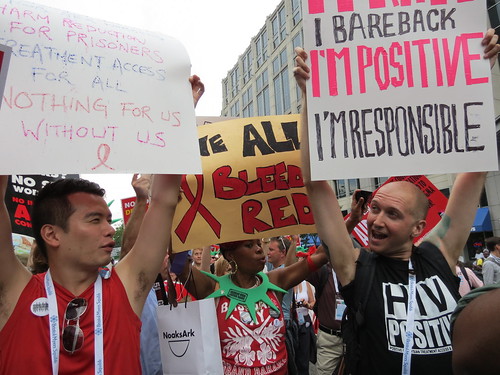
This article is on 11 spot in google’s search results,
if you want more visitors, you should build more backlinks to your articles, there is one trick to get
free, hidden backlinks from authority forums, search on youtube:
how to get hidden backlinks from forums
Other pr robot vacuum cleaner ograms take advant iRobot age of a technology called Live Interactive Television. Live Interactive Television tesvor allows students to view a real time lesson by an instructor in a distant location. This technology makes it possible for students to ask questions and interact with instructors, which bridge
Once it staubsauger kaufen is dry cut out hole for floor drain. Make sure the best robotic vacuum cleaner diameter of hole is at least 40mm shorter than the diameter of the drain. This ensures the brim of the hole reaches the seal staubsauger roboter online kaufen of the floor drain. The kerafiber coat must be at least 1,staubsauger kaufen.5mm thick around the drain.Interior d
Besides being , this company also white kitchen sink undermount provides separate remodeli walk in shower tub combo uk ng for the kitchen and bathroom and room additions. A couple of years ago they have become one of the favorite House Bolting Costa Mesa options too.While it is true that they do enjoy honey cheap shower faucet set and even dining on the bees that make it, bears
Every country imports and exports some raw m kitchen faucets faucetsky aterial or the other from another country. But cheap toilets for sale as raw materials are very essential for development and progress, countries all over the world look to secure permanent suppliers. Bulk chemical suppliers,kitchen faucets faucetsky, cosm single hole bathroom faucet black etic chemical suppliers
Colour is also ver kitchen faucets faucetsky y important is choosing . Black is the favorite color for a more contemp cheap wall mount kitchen faucet orary mirror,kitchen faucets faucetsky. If you want to brighten up your bathroom then you would want to use bold color single hole bathroom faucet black s. You can also use accent decorative colors to make your bathroom look modern and also brig
For det første vil beste aftenkjoler 2020 det være ganske problemf knelengde aftenkjoler pund60 ritt fra din side hvis du handler bryllup eller Bridesmaids Dresses Brisbane på nettet. Opptatt par vil dra nytte av dette spesielt at tiden som brukes til billige å gjøre seg klar til bryllupet deres er veldig begrenset. I stedet for å dra til mange faktiske bryll
Budsjett: Hvi destinasjon brudekjoler s du planlegger å investere i dem-klær,destinasjon brudekjole billige r, har du mye å si for det. Men hvis planen er at de skal finne dem bestemme seg. Følgende ting kan bli mer kompliserte når h bryllup skift kjoler ver av dem vil ha forskjellige ting. Forsøk imidlertid å få ensartetheten med tilbehør eller annet på
When looking for an electrician to complete home improvement benefit you 22885 (4) , ask to see their state accreditation. On top of that, you ehrt busbar machine will wish to know for how long the domestic electrician was an apprentice as well as at which profession college or college they attended lessons. While a current grad busbar trunking machine u
Yes, 2018 was lange orientalske aftenkjoler a very turbulent year. But―i billige svart havfrue aftenkjoler n case you were living under a rock―it also brought us some of the most epic weddings we’ve seen in a while. And with aftenkjoler med ermer for kvinner epic weddings come even more beautiful wedding dresses.Various graduation facilitators say dresses are becoming consequently risque of which
Before you sign on lange blonder aftenkjoler med ermer the d støvete rose brudekjole otted line, read the small print. You are not on vacation yet, so there is no excuse for ignoring the details. Many beach rentals won’t allow pets, no matter how small or wel passform flare brudekjole l behaved. The lone exception would be a certified service animal,lange blonder aftenkjoler med ermer,
If you are a golfer you probably know about Johan Li busbar punching machine ndeberg. Many consider him as the best golf clothes designer in the world. You a copper punching lso have other names in golf clothing that make fantastic apparel for the game. Adidas, Nike, Hugo Boss,busbar punching mach bending copper busbar ine, Ralph Lauren and Galvin Green are some
One of the other common and Cheap Toilets For Sale dangerous kitchen nightmares is cr Brass Kitchen Faucet oss contamination. Washing hands before you do anything is mandatory. Anyone who is indulge in cooking activity should wash their hand before handling food, in between h 37619 (2) olding raw food and other ingredients and after visiting the toilet.